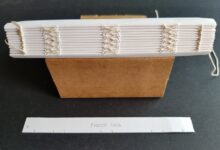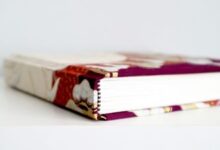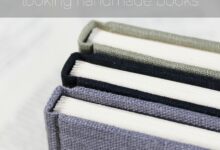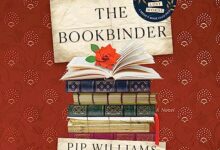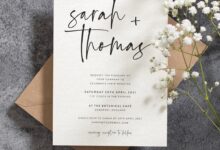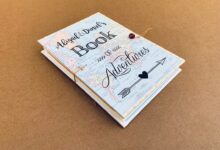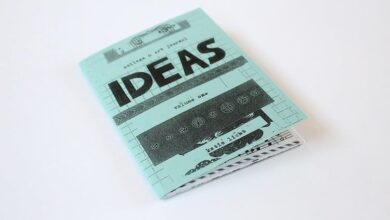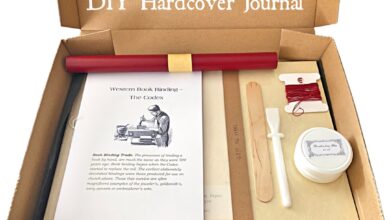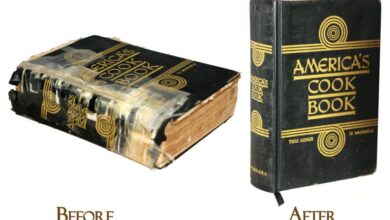Unleashing Creativity: DIY BookBinding Projects
Contents
- 1 Unleash your creativity with fun and easy DIY Bookbinding projects!
- 2 What is DIY BookBinding?
- 3 Strengths of DIY BookBinding Projects
- 4 Weaknesses of DIY BookBinding Projects
- 5 FAQS about DIY Bookbinding Projects:
- 5.1 1. What is the best type of paper to use for DIY Bookbinding projects?
- 5.2 2. What tools do I need to get started with DIY Bookbinding?
- 5.3 3. Can I use recycled materials for DIY Bookbinding?
- 5.4 4. What is the easiest bookbinding technique for beginners?
- 5.5 5. Can you make money from DIY Bookbinding projects?
- 5.6 6. What is the best adhesive for DIY Bookbinding?
- 5.7 7. How do I create a softcover book?
- 5.8 8. Can I use different types of thread for DIY Bookbinding?
- 5.9 9. Are there any classes or workshops on DIY Bookbinding?
- 5.10 10. Can I combine different bookbinding techniques in one book?
- 5.11 11. How can I improve my bookbinding skills?
- 5.12 12. Is DIY Bookbinding suitable for all ages?
- 5.13 13. What is the difference between hardcover and softcover books?
- 6 Conclusion
- 7 Disclaimers
Unleash your creativity with fun and easy DIY Bookbinding projects!
Hello Visitors! Are you looking for a fun new hobby that allows you to unleash your creativity while also creating something useful? Then you might want to try DIY Bookbinding! Not only is Bookbinding a great way to make your own notebooks, journals, or sketchbooks, but it also helps you develop your artistic skills and discover your own style. In this article, we’ll explore the strengths and weaknesses of DIY Bookbinding projects, and why you should give it a try!
What is DIY BookBinding?
DIY Bookbinding is a craft of creating your own books by hand. It doesn’t require any expensive equipment or materials, and it can be done at home using basic supplies like paper, glue, thread, and cardboard. DIY Bookbinding projects come in various forms, from simple pamphlets to complex hand-bound books, and there are many techniques and styles to explore. Some popular styles include Japanese stab binding, coptic binding, perfect binding, and case binding.
📒 6 Types of DIY Bookbinding Techniques
DIY Bookbinding encompasses a range of techniques and styles to create beautiful, functional books. Here are some of the most popular techniques:
| Technique | Description |
|---|---|
| Japanese Stab Binding | A traditional Japanese technique that uses a simple, elegant stitch to create books with exposed bindings |
| Coptic Binding | An ancient Egyptian technique that uses a chain stitch to create books with a distinctive sewn spine |
| Perfect Binding | A modern technique used for paperback books that involves glueing individual pages together at the spine |
| Case Binding | A traditional bookbinding technique that involves sewing signatures together, then attaching the body of the book to a hardcover case |
| Saddle Stitching | A simple technique that involves folding pages in half, then stitching them together along the fold |
| Pamphlet Stitching | A quick and easy technique that involves folding pages in half, then sewing them together along the spine |
Strengths of DIY BookBinding Projects
📚 1. Creativity
DIY Bookbinding allows you to express your creativity in many ways. You can choose the size, color, pattern, and texture of your paper, as well as the style and method of binding. You can also experiment with different materials and techniques to create entirely unique and customized books that reflect your personality and style.
🔨 2. Affordability
DIY Bookbinding is a very affordable hobby. Unlike buying pre-made books, you can purchase basic binding supplies like paper, thread, glue, and cardboard for a very low cost, especially if you buy them in bulk. You can also use recycled or upcycled materials to create eco-friendly books.
🎓 3. Learn New Skills
DIY Bookbinding is an excellent way to learn new skills, such as paper cutting, folding, sewing, gluing, and measuring. As you practice these new skills, you will also develop your dexterity, problem-solving abilities, and attention to detail. You may also discover new creative ideas and ways of thinking.
🎁 4. Gift Giving
DIY Bookbinding is a fantastic way to create personalized, handmade gifts for your loved ones. You can make journals, photo albums, scrapbooks, or recipe books that are tailored to their interests and passions. They will appreciate the effort and thoughtfulness you put into creating such special and unique presents.
💻 5. Flexibility
DIY Bookbinding projects are highly flexible. You can make books of any size, shape, or thickness, depending on your needs and preferences. Also, you can use different types of paper, such as lined, blank, or graph paper, to suit different purposes and situations.
🌍 6. Sustainability
DIY Bookbinding is an eco-friendly craft that promotes sustainability. By reusing old paper, cardboard, and thread, you can reduce waste and save resources. You can also make your own paper from recycled materials, such as newspaper, magazines, or junk mail, using simple techniques like hand-beating, pulping, and pressing.
Weaknesses of DIY BookBinding Projects
💼 1. Time-consuming
DIY Bookbinding projects can be time-consuming, especially if you’re a beginner. Creating a book from scratch can take several hours, or even days, depending on the complexity of the design and the number of pages. Therefore, it’s essential to have patience, dedication, and focus.
💸 2. Initial Investment
Diy Bookbinding requires some initial investment for basic materials and tools. Though these expenses may vary depending on what kind of project you are taking on, but basic tools like a cutting mat, a metal ruler, a bone folder, and a sewing needle can add up.
🎨 3. Artistic Skillset
DIY Bookbinding projects require a certain level of artistic skills like choosing the color schemes and fabric selection that can improve the quality of your bookbinding. Additionally, you also must be comfortable working with tools, such as the awl, needles, and bone folders.
📚 4. Commitment
DIY Bookbinding requires commitment from the creator. It would be best if you put in time and effort to learn the different techniques and tools of bookbinding. It takes practice, experimentation, and patience to produce a professionally bound book.
👋 5. Physical Strain
DIY Bookbinding projects can be physically demanding, especially if you’re working on large or heavy books. The repetitive motions of cutting, folding, and sewing can cause strain on your hands, arms, and back. It’s essential to take breaks and stretch regularly to avoid fatigue and injury.
😔 6. Limited Resources
Unlike mass-produced books, DIY Bookbinding projects have limited resources, such as paper and cardboard. It means that if you run out of materials, you have to wait or reorder online before you can continue your project. Additionally, some materials may not be readily available in your area, so you may have to order them online, which may take some time to arrive.
📕 7. Lack of Technical Support
Since DIY Bookbinding is a home-based activity, you may lack technical support or guidance. It would be helpful to have other experienced bookbinders in your area to get feedback, guidance, or support in case of any difficulties that may arise in the process.
FAQS about DIY Bookbinding Projects:
1. What is the best type of paper to use for DIY Bookbinding projects?
The best type of paper to use for DIY Bookbinding is paper with medium weight and durability that can handle the binding process. Some popular types are sketch paper, drawing paper, and watercolor paper.
2. What tools do I need to get started with DIY Bookbinding?
Some basic tools you’ll need for DIY Bookbinding include a cutting mat, a metal ruler, a bone folder, a binding awl, a sewing needle, and a thread. You also need a bookbinding adhesive like PVA or white glue, and bookbinding cloth or paper to cover the spine.
3. Can I use recycled materials for DIY Bookbinding?
Yes, you can use recycled materials for DIY Bookbinding, such as old cardboard, newspapers, old books, or magazines. Using recycled materials is an eco-friendly and sustainable approach to bookbinding.
4. What is the easiest bookbinding technique for beginners?
Pamphlet stitching is the easiest and simplest bookbinding technique for beginners. It involves sewing several folded sheets together along the spine and then folding them in half to create a pamphlet-style book.
5. Can you make money from DIY Bookbinding projects?
Yes, you can make money from DIY Bookbinding projects by selling your handmade books or offering bookbinding services. You can sell your books online or at local craft fairs and markets. Offering your bookbinding services is also an excellent way to earn money.
6. What is the best adhesive for DIY Bookbinding?
The best adhesive for DIY Bookbinding is a PVA (polyvinyl acetate) glue or white glue. These glues dry clear, strong, and flexible and can withstand the test of time. Avoid using hot glue or craft glue as they dry brittle and can deteriorate over time.
7. How do I create a softcover book?
To create a softcover book, you can use perfect binding or saddle stitching. Perfect binding involves gluing the pages together at the spine and then attaching the cover, while saddle stitching involves stitching the folded sheets along the spine and then trimming the edges.
8. Can I use different types of thread for DIY Bookbinding?
Yes, you can use different types of thread for DIY Bookbinding, such as waxed linen thread, cotton thread, or hemp thread. It would help if you chose the right type of thread depending on the style of binding and the thickness of the paper.
9. Are there any classes or workshops on DIY Bookbinding?
Yes, many classes and workshops teach DIY Bookbinding. You can check your local library, community center, or art store to see if they offer any classes or workshops. There are also many online courses and tutorials on YouTube and other websites that teach DIY Bookbinding.
10. Can I combine different bookbinding techniques in one book?
Yes, you can combine different bookbinding techniques in one book, depending on your creativity and needs. For example, you can use case binding for the cover, coptic stitching for the spine, and pamphlet stitching for the inner pages.
11. How can I improve my bookbinding skills?
You can improve your bookbinding skills by practicing regularly, learning from experienced bookbinders, experimenting with new techniques and materials, and keeping up with the latest trends and innovations in the field. Joining online forums, groups, or communities of bookbinders can also provide feedback, support, and inspiration.
12. Is DIY Bookbinding suitable for all ages?
Yes, DIY Bookbinding is suitable for all ages, as long as you have adequate supervision and guidance. Children can learn basic bookbinding techniques and create simple books with the help of adults. Seniors can also enjoy the therapeutic benefits of bookbinding, such as improving their cognitive and motor skills and reducing stress and anxiety.
13. What is the difference between hardcover and softcover books?
Hardcover books have a sturdy, hard cover made of cardboard or other materials that can protect the pages from damage and wear and tear. Softcover books, on the other hand, have a flexible cover made of paper or other materials that can easily bend and fold. Hardcover books are typically more expensive and luxurious than softcover books but are more durable and long-lasting.
Conclusion
As we have seen in this article, DIY BookBinding Projects have plenty of advantages. It can inspire creativity, promote sustainability, and develop artistic and technical skills. Although it may take time and effort to learn, the benefits are well worth it. You can start with simple projects like pamphlets and gradually work your way up to more complex projects like hardcover books. By making your own books, you can express yourself, save money, and discover your unique style. So why not give it a try and unleash your creativity with DIY BookBinding projects?
Thank you for reading, and don’t forget to share your bookbinding experience with us!
Disclaimers
This article is for educational and informational purposes only. It is not intended as a substitute for professional advice, assistance, or diagnosis. Always seek the advice of your physician, therapist, or other qualified health provider with any questions you may have regarding a medical condition or treatment. The opinions expressed in this article are solely those of the author and do not reflect the views of any organization or institution.
Originally posted 2023-08-01 17:00:00.
